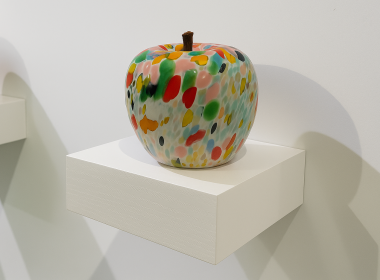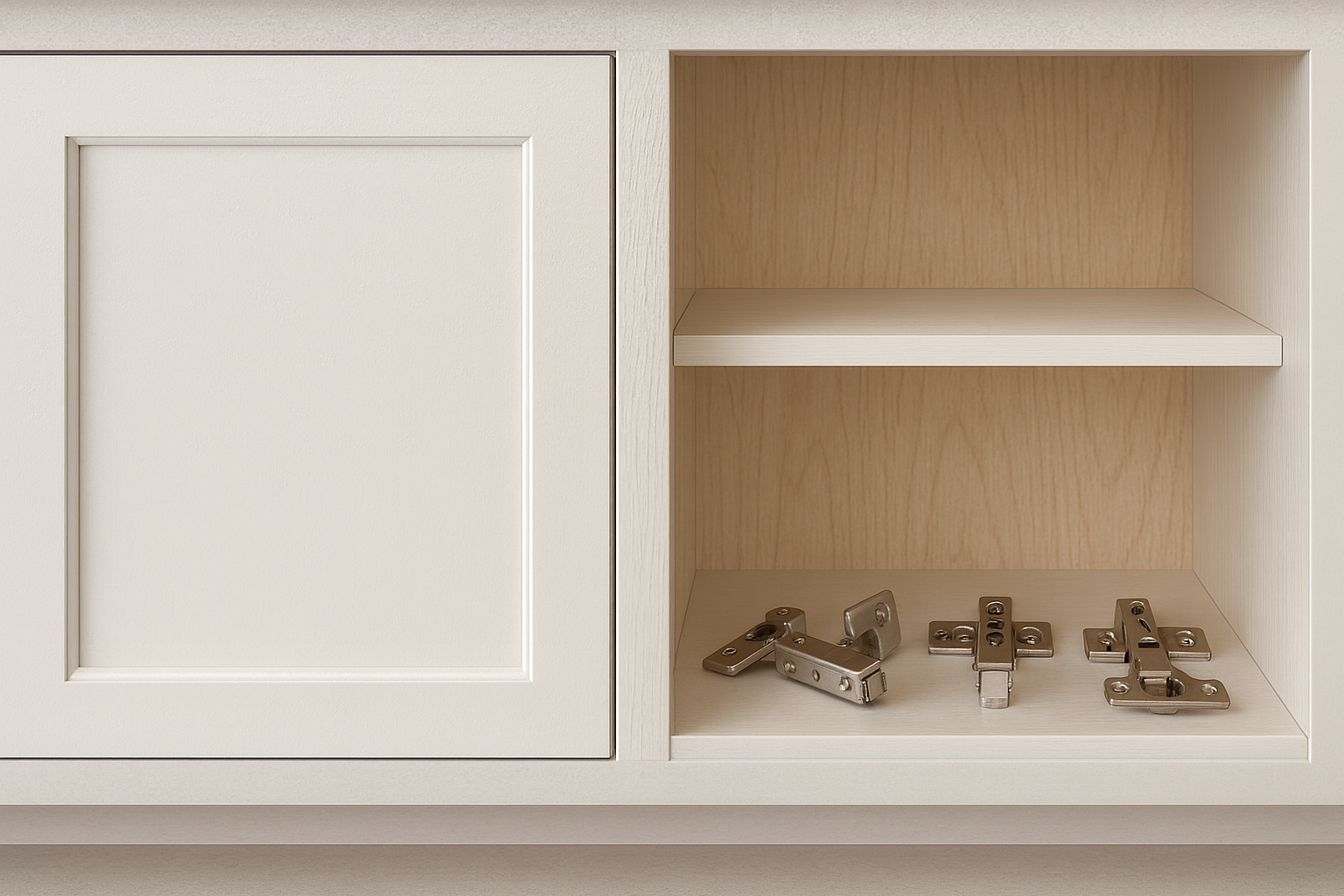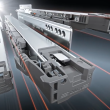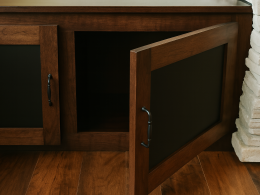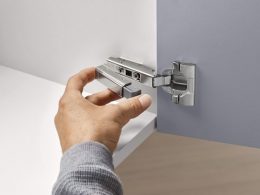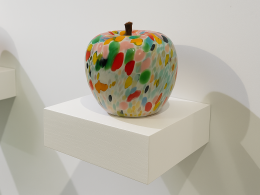When it’s time to select hinges for your cabinet doors, the choice between inset and overlay styles is more than just aesthetics. Each brings different implications for cost, installation precision, cabinet construction, and long-term performance. In this guide we’ll break down what inset vs. overlay hinges really mean, how they differ, and how to decide which is best for your cabinet design — especially if you’re a cabinet or interior design professional, or managing specification for a multifamily or commercial build.
Quick Reference: Inset vs Overlay Hinge Comparison
- Inset: Flush fit, high-end look, tight tolerances, higher cost, furniture style.
- Overlay: Door covers frame, easier installation, more adjustability, cost-effective, modern/traditional flexibility.
Choose based on construction type, budget, installer precision, and design goals, not just because one “looks better.” As always, good hardware and precise installation underpin long-term satisfaction and durability.
What Do “Inset” and “Overlay” Mean?
Inset Doors
Inset doors sit inside the cabinet frame or face-frame so that when closed the door is flush with (or nearly flush with) the frame. The hinge of choice will be one that allows for that flush alignment and minimal gap.
Because of this flush fit, the face-frame remains visible around the door edges, giving a furniture-like, refined appearance.
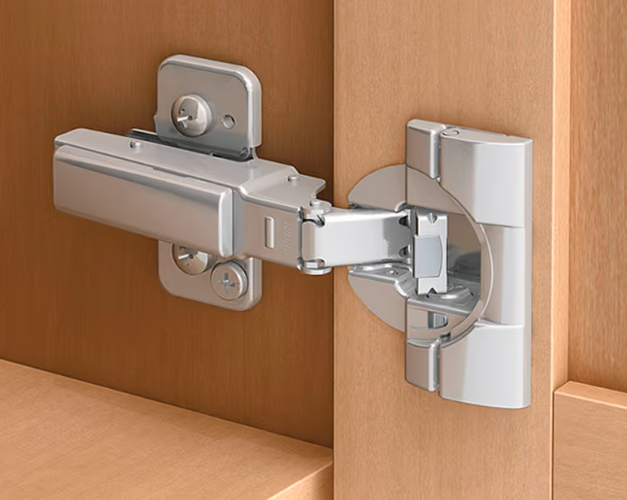
Overlay Doors
Overlay doors lay over the cabinet opening (face frame or frameless box) to varying degrees. There are two common overlay styles:
Full Overlay: the door covers substantially all of the frame or box front, producing a nearly seamless front.
Partial Overlay: the door covers part of the frame/front leaving visible reveal lines or frame exposure.
In the hinge context, an overlay hinge is designed to work with doors that sit over the box/frame rather than inside it.

Why Hinge Type and Door Fit Matter
Hinge selection is not just a hardware decision; it ties directly into cabinet build quality, door alignment, user experience, and long-term adaptability.
Some key considerations:
- Hinge adjustment and durability: Overlay hinges tend to allow more adjustability (side-to-side, up/down) to compensate for less precise builds or shifting over time.
- Precision and gap control: Inset doors require tight build and installation tolerances. If the frame or doors shift or wood movement occurs, gaps become visible.
- Storage space: Because inset doors sit inside the frame, the interior opening may be slightly reduced compared to overlay doors which sit on top of the frame.
- Cost and build complexity: Inset cabinets and matching hinges generally cost more, due in part to precision required and potential for labor-intensive installation.
- Aesthetic and finish-level: Overlay offers more flexibility and is more forgiving. Inset suggests high-end, furniture-quality work.
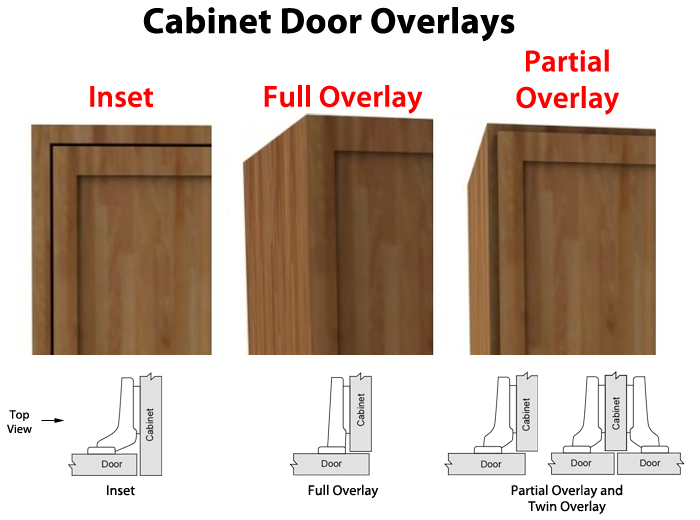
Comparing Inset vs Overlay Hinges: Head-to-Head
Here’s a breakdown of how the two hinge styles stack up across key criteria:
| Criterion | Inset Hinges | Overlay Hinges |
|---|---|---|
| Look & Style | Flush, refined, furniture-like. High-end aesthetic. | Clean, modern (full overlay) or traditional (partial overlay). More common. |
| Installation Tolerance | Low margin for error. Requires precise cabinet/frame builds and hinge mounting. | More forgiving. Overlay doors cover frame irregularities more easily. |
| Cost | Generally higher material + labor cost. | Typically lower cost options; easier to install. |
| Storage Impact | Slightly less interior capacity if the door must fit inside. | Slightly more space since door overlays frame. |
| Maintenance & Adjustment | Less internal adjustment; if mis-alignment occurs might be more visible. | Greater flexibility for adjustment; easier retrofit or realignment. |
| Ideal Use Case | Premium custom cabinetry, historic/furniture styles, visible hardware design element. | Wider application: remodels, multifamily, commercial fit-outs, cases where budget or speed matters. |
Which Should You Choose? Key Questions for Specification
When advising clients or selecting for a build, ask the following to determine the right fit:
- What is the cabinet construction?
Are the cabinets face-frame or frameless? The overlay/inset decision interacts with cabinet type. - What is the design aesthetic?
- Want furniture-quality, custom-built look? Inset may be the choice.
- Want a sleek modern run or value build? Overlay may be best.
- What is the budget and timeline?
If budget or time-to-install is constrained, overlay offers cost-and-schedule advantages. - How precise are the cabinets (and installer) likely to be?
If the cabinetmaker or installer has less margin for precision, overlay is the safer choice to avoid visible gaps and alignment issues. - What about long-term durability and maintenance?
Consider how the cabinets will behave over time. Wood movement, wear and tear may affect inset flush fits more visibly. - Will you mix styles?
Some designers choose inset for upper‐cabinets (for the refined look) and overlay for lower cabinets (for durability or cost control). That hybrid approach can deliver premium appearance where it shows most, and value where it’s less visible.
How to Specify and Install Each Correctly
Inset Hinge Specification Tips:
- Confirm hinge type is compatible with inset door thickness and frame reveal dimension.
- Specify required door sits flush or slight reveal (e.g., 0 – 1 mm gap).
- Use high‐quality precision hinges (e.g., 180° opening, soft-close where desired).
- Inspect cabinet frames and doors for square, flat surfaces before hinge mounting.
- Allow for wood movement (humidity/season) and set expectations for tight tolerances.
Overlay Hinge Specification Tips:
- Determine overlay type: full vs partial. Specify overlay dimension (e.g., ½”, 1¾”, etc).
- Choose hinges (European cup type, or face-frame mount) suited to overlay style.
- Ensure hinge mounting plate allows for fine adjustment (height, side-to-side, depth) to align doors.
- For partial overlay, account for visible frame reveals and ensure finish quality of frame is acceptable since it will show.
- For full overlay, check that doors don’t interfere with adjacent doors or hardware when open.
Real-world Considerations & Trade-offs
- Gap visibility over time: Inset looks classic and very clean but can show gaps over time. Even the best installers may face subtle shifting or wood movement; inset doors leave less margin for error.
- Wear and tear on frame: If the cabinet frame is exposed (as with inset or partial overlay), the edges of the frame can chip, dent or show wear. It’s important to remember that with overlay, the frame is hidden under the door front and so minor damage is less visible.
- Customization vs modular build: Inset doors often imply custom cabinetry and premium budget, whereas overlay doors (especially full overlay) align well with semi-custom or modular frames.
- Serviceability and adjustability: In commercial or multifamily environments where doors may need regular service or require field adjustment, overlay hinges with adjustability are often more robust.
Final Recommendation: Inset vs Overlay Hinges
If you are specifying cabinetry for high-end residential, historic renovation, or furniture-inspired looks and budget allows, select inset hinges and doors to achieve that flush furniture‐style appearance — just be sure the build, installation and tolerances are aligned.
If you are specifying cabinetry for broader use (multifamily, contractor builds, remodels) and want a great balance of appearance, performance, budget and installation ease, go with overlay hinges (full or partial). Overlay offers excellent flexibility and fewer risk points for visible mis-alignment over time.
At Würth Louis & Company, we recommend partnering closely with your hardware supplier, hinge manufacturer, and cabinetmaker early in the project. Confirm cabinet box type (face-frame vs frameless), door overlay specification, hinge style, adjustment features and installation tolerances — that way the aesthetic you envision on day one remains reliable through years of use.





